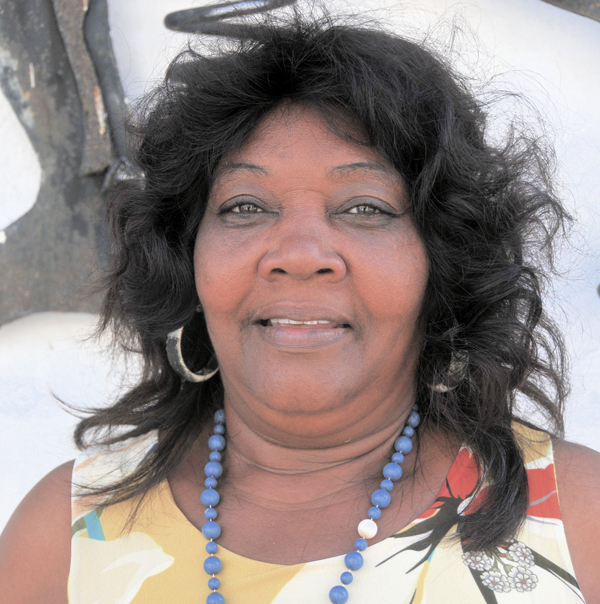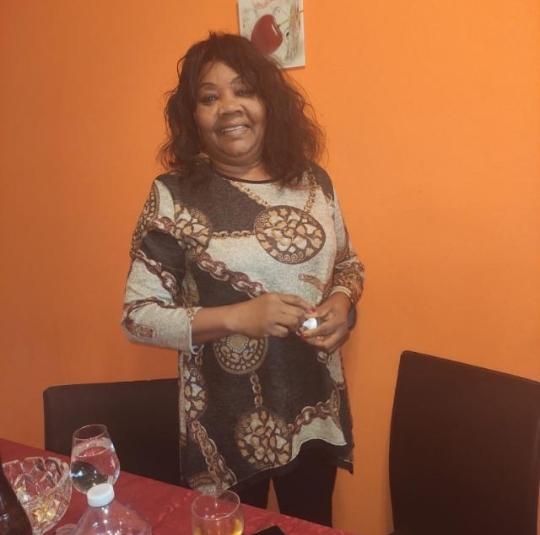
Lidia Josefina Taylor Johnson has already retired, but our scene owes much to her formative contributions of generations, to the mark left in the folkloric company Onilé, born under her aegis. To go back in time and learn from teachings such as those of this woman is not only wise but also necessary. And the dialogue is not long in coming.
- How were your beginnings in dance?
I remember that in primary and secondary school I always participated in all the cultural activities; I danced a lot, but I also liked singing. When I entered the School of Art Instructors of Caney de las Mercedes, it was precisely in Music, but while there I realized that I was doing better in Dance than in singing and I changed my specialty.
Therefore, I returned to Las Tunas in 1977 and began to work with pioneers, high school students, and workers. I am a founding instructor of the Tomasa Varona House of Culture. There I formed a group called La Victoria; many of its members later became cabaret dancers and others became instructors like Pedro Luis Calderón and Víctor Charles.
-Did you just direct that group? You didn't dance.
I did both. I remember that group with great affection because we had an intense artistic life. The carnival shows were fantastic. I can assure you that I grew a lot artistically. That prepared me for greater endeavors. Look, with the group La Victoria, together with Rubén "Cachirulo" Valdés, we undertook the task of investigating all the country dances of Las Tunas.
-What are the dances that people from Las Tunas peasant dance?
-How did you get involved in Haitian-French folklore
I am a descendant of Caribbean emigrants - Haitian and Jamaican -; since I was a child I grew up in that environment. Later, together with Rosario and Victor Quintana, I joined the Petit Dancé group and we carried out deep research on the French-Haitian dances. Because of all this that I have told you, I am mentioned in the Cultural Atlas of the country as a researcher. I can tell you that this was a very beautiful stage of my life.
-From what you confess to me, at that stage you were ready to found Onilé.
Don't believe it...
-So... How did Onilé come about?
At that time, I was already a Dance Methodologist and Yolanda Mayedo asked me to form a group of Spanish folk dances. But I said to myself: that's not my line. And, if I'm honest, I know very little about that, only what I learned in school, which they just mentioned.
So, I gathered a group of young people from the Mexico neighborhood and made a show, where I invited some cultural directors. She also had her guests, but when she saw what I presented she almost had a heart attack. I want to tell you that my life was a little difficult, I had many conflicts because of that, however, I had the support of the provincial director of Culture Alberto Torres; he made arrangements for specialists in Dance and Theater of the National Center of Performing Arts (CNAE) to come and guide me.
-Now we are at the doors of the foundation of Onilé, aren't we?
No, we're not..., that's still a while away. Those CNAE specialists came and guided me, but the first ones who came were not folklore specialists. I am referring to Bárbara Rivero, Bárbara Oviedo, Ismael Arvelo, and Noel Bonilla...; they had more to do with classical and contemporary dance, but they put me in contact with very important members of the National Folkloric Ensemble (CFN).
It turns out that at that stage our province had to attend ExpoCuba with a cultural exhibition and we were chosen. So we went to Havana and then we agreed that the specialists of the CFN would audition us there. After performing a huge troupe parade, extremely long, I was introduced to Silvina Fabar and other members of the Folklórico Nacional, who had come there to audition for us. We were very tired, but they told us: 'Relax, guys, after you freshen up, we'll see each other'.
I tell you that certain directors of the Tunera culture present there were opposed to auditioning us, but we said yes and we did it with so much dedication, that they saw our possibilities and began to support us. Then, Silvina Fabart, Leonor Mendoza, and Alberto Villareal were here several times giving us technique and percussion workshops, until they thought we were ready to present the project to the Performing Arts.

-When did Onilé become professional?
Our project was approved by the Performing Arts on April 5, 1995.
-Well, then, the Company celebrated its 28th anniversary this year.
Likewise, 28 years of intense work, tears, and frustrations, but also many joys and satisfactions.
-Do you remember Onilé's first shows since then?
That is hard to forget: Orisha Parade, Rebellion, Good and Evil, Haitian Party... That last show was the basis of our first evaluation, for which many friends gave us a hand, among them Aleida Best, Jorge Torres, Marina Lourdes Jacobo, Ivelice Avila, Manuel Hernandez, and you too.
-All the officials you mentioned were just doing our duty in the service of culture...
I know, but I could not fail to mention them.
-Why do many members of other folkloric groups say that Onilé dances very crudo? What do they mean?
Well, when folklore is danced very crudely it is because we do not use much technical support, but we use basic elements such as the dock and the scenic projection, especially the facial oval. Many times the public believes that the dancers are possessed or in a trance and it is simply concentration.
That opinion became generalized and has been part of the aesthetic line. Dancing is very strong and a lot of stage projection. But some creators like that way of dancing like Raúl de la Rosa, who once declared: 'With Onilé there is no chance'. He always called us to his shows.
-Having accompanied Onilé since 2000, I have had the pleasure of seeing almost all of his shows, but I remember three that I consider relevant, I am referring to Ará Eggun Ará Osha, Bembé, and Los Lwá. Do you agree with me?
Yes, those stagings are fantastic, but I would add El bien y el mal, because it is a show about Franco-Haitian folklore very well structured, with tremendous strength; with it, we went to many events and festivals and it gave us a lot of satisfaction.
-Tell us about your stay as an instructor in Venezuela.
It was a unique experience. I worked intensely with people of all ages and sectors. I also made many friends.
-As time went by, many of the first members of the group, including yours, retired naturally. However, there have also been dancers who graduated from the dance schools of our artistic education system, what do you think about it?
The art that is not renewed dies quickly. I am happy with this new batch.
-One last question... Would you like Onilé to take another name someday?
I don't know what to answer. Today Reitel Velázquez Aguillón leads the group, with a very strong sense of belonging. I am convinced that he will overcome all the difficulties the company is going through (such as the lack of boards and instruments). The main thing is creation.





